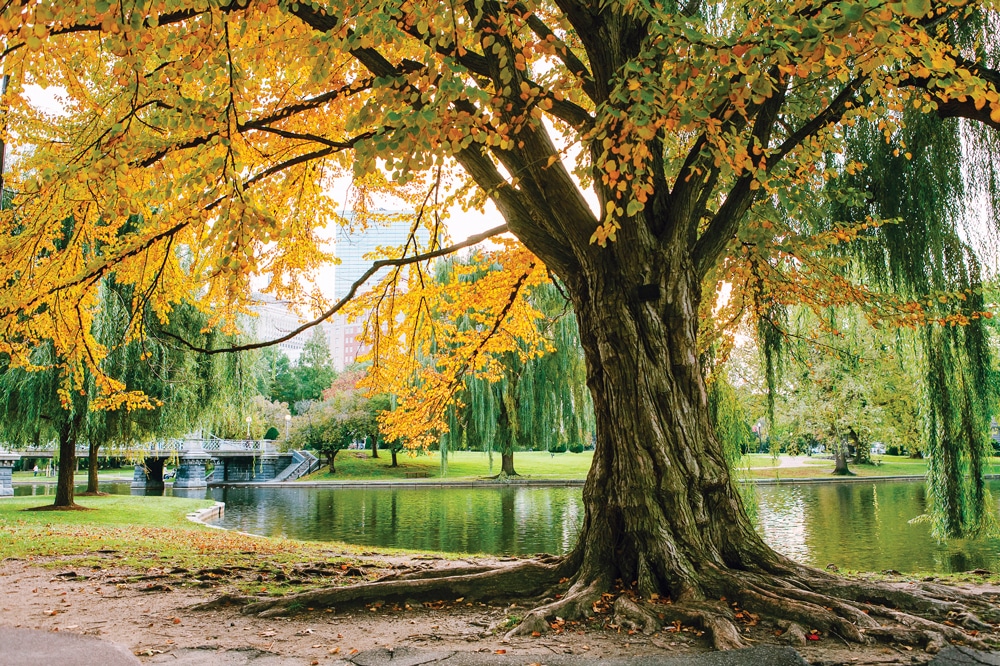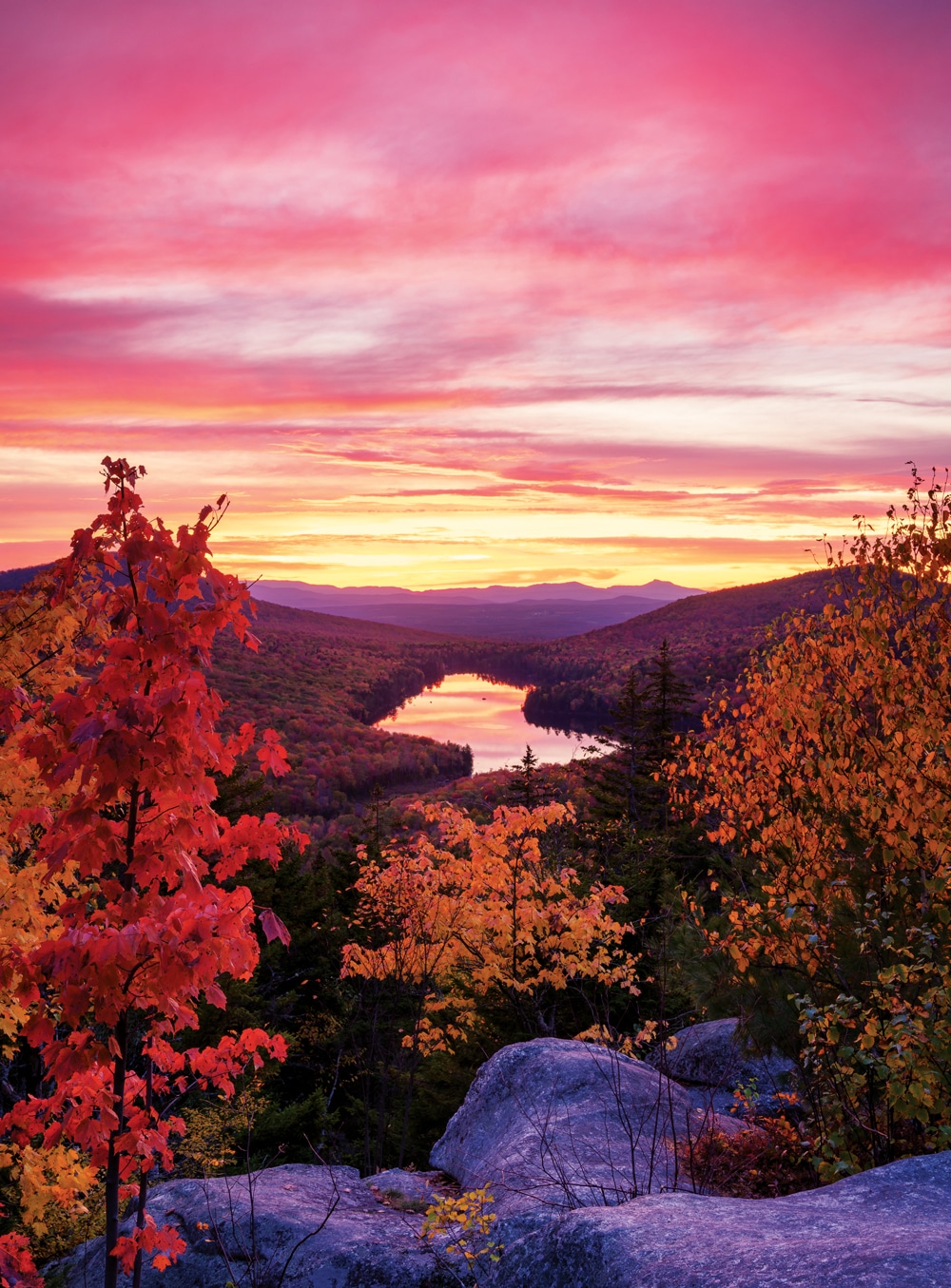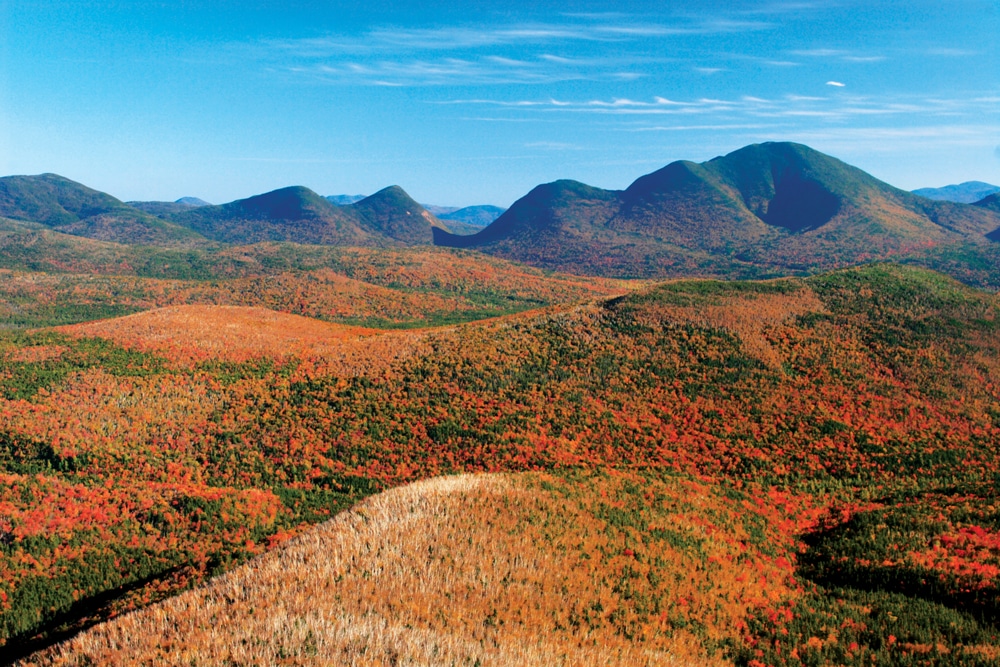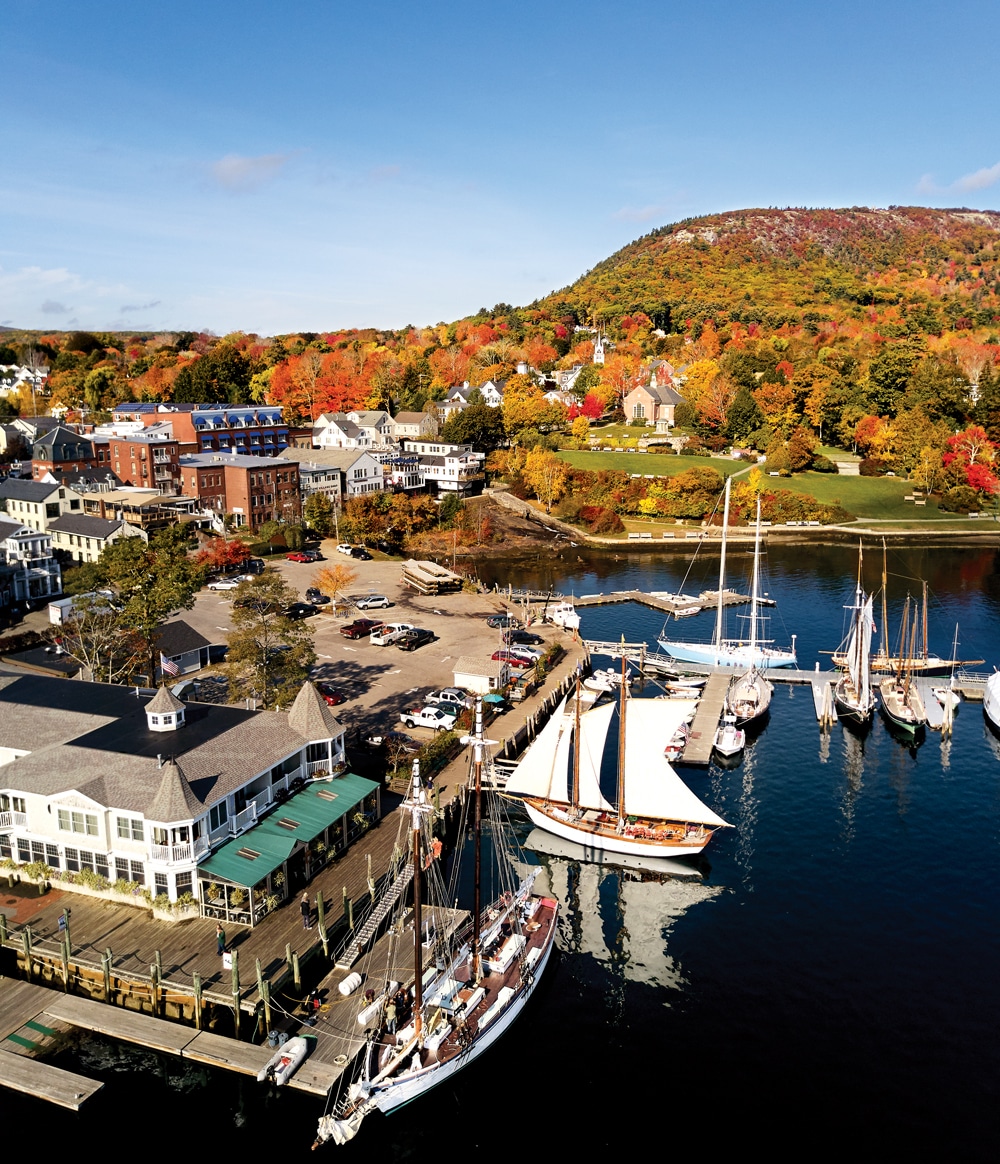The Best 5 Peak-Color Foliage Destinations in New England
Yankee’s resident foliage expert explains why these five places steal the show.

Shades of gold on a katsura tree, a native of Japan and China, in the Boston Public Garden.
Photo Credit : Raymond Forbes Photography/Stocksy
Photo Credit : Michael Blanchette
In making my yearly foliage forecast, I combine these factors with annual variations in temperature, rainfall, and pest levels to determine the overall intensity of fall foliage. Still, year after year there are some specific places where weather and climate create standout color. Here are a few of my favorites.
The Best 5 Peak-Color Foliage Destinations in New England
Groton State Forest, VT
Home to seven state parks within its 26,000-plus acres, Groton State Forest is one of the earliest places in Vermont to see peak color. The reason? For the brightest hues you need cool, crisp nights and warm, sunny days, and the high hills here have overnight lows similar to those in Smugglers’ Notch but daytime highs closer to downtown Burlington’s—plus more sunshine than either. The result is vibrant early color in a forest dominated by maple and birch.
While there is road access to lakes and campgrounds here, some of the most rewarding views are found on foot or by boat. Take the moderate 3½-mile round-trip hike to the summit of Owls Head Mountain, overlooking glacial Kettle Pond and surrounding forests, or plan a paddle on Lake Groton or Ricker Pond to look up to hillsides awash with color. Peak color: Late September to early October. vtstateparks.com

Photo Credit : Jim Salge
Carroll, NH
With some 800,000 acres of near-contiguous forests, the White Mountains region is among New England’s most popular areas to see foliage. And it’s here that you’ll find Carroll, whose two main villages—Bretton Woods and Twin Mountain—boast the perfect topography for early color. The season’s first cold fronts bank against the imposing slopes of the Presidential Range, creating an elevated icebox at autumn’s onset.
Take in the spectacle from the grounds of the Omni Mount Washington Resort or the AMC Highland Center, which offers information and advice on local hiking. The area is also dotted with spectacular waterfalls, including the roadside Upper Ammonoosuc Falls and Silver Cascade in Crawford Notch State Park. Peak color: Late September to early October. twinmountain.org

Photo Credit : Mark Fleming
Camden, ME
The storied Acadian forests of Down East Maine have a distinct breakpoint along the state’s midcoast, where mixed hardwoods transition to predominantly oak. Coastal forests have a beauty all their own, but in Camden you can see a landscape of both forest types simultaneously.
To see peak color in Camden, go later than you would for much of the rest of Maine. While the mountains that surround the town’s pretty harbor reach over 1,000 feet, the foliage is influenced by moderate coastal temperatures, which means most trees are turning in mid-October. A mile-long hike to Maiden Cliff provides an overlook of Megunticook Lake and forested hills; a climb up Mount Megunticook gives the contrast of green leaves toward the ocean and brighter leaves toward the lake; and a drive up Mount Battie through Camden Hills State Park, while it may not show off peak until late October, yields an iconic, don’t-miss view down to the village. Peak color: Third to early fourth week of October. camdenrockland.com

Photo Credit : Raymond Forbes Photography/Stocksy
Boston, MA
New England’s biggest city is both one of the most unexpected spots for memorable foliage as well as one of the last places to see its leaves change. Since downtown Boston’s buildings hold on to heat overnight, the evening temperatures don’t cool down as much as in the suburbs, so colors don’t begin to turn until late October.
The city has several notable green-spaces, starting with Boston Common and the Public Garden. Tree species from all over the world grow there, creating a broad palette of autumn color and a beautiful foreground to the skyline. But a special treat is the three-mile walk along the Charles River Esplanade, where over 3,000 cherry trees line the route with deep-crimson foliage. At the western end, head to the Back Bay Fens for a photo op adjacent to Fenway Park, where with luck the Sox will still be playing deep into October. Peak color: Late October to early November. bostonusa.com
Litchfield, CT
While only an hour’s drive from the coast, the hills of northwestern Connecticut experience a completely different climate. Nighttime temperatures throughout October average 10 to 15 degrees cooler than those along the ocean, and peak colors can arrive weeks before trees change along Long Island Sound.
Litchfield makes a fine home base for autumn drives through valleys dotted with old barns and ringed with hills preserved through state forests, parks, and an Audubon sanctuary. Hikers will want to head for either White Memorial Conservation Center, which has 40 miles of trails along with kayaking and camping, or Mount Tom State Park, where views from a historic stone observation tower are the reward for a fairly modest climb. Peak color: Second to third week of October.discoverlitchfieldhills.com
Find More Foliage!
Jim Salge’s Official 2021 Foliage Forecast
New England Peak Foliage Map
25 Memorable Things to Do in New England in Fall
Jim Salge
As a former meteorologist at the Mount Washington Observatory, foliage reporter Jim Salge is a keen observer of the progression of the seasons in New England. He uses his knowledge of weather, geography and climate to pinpoint the best time to visit various New England locations to find the best light, atmosphere, and most importantly, color.
More by Jim Salge

